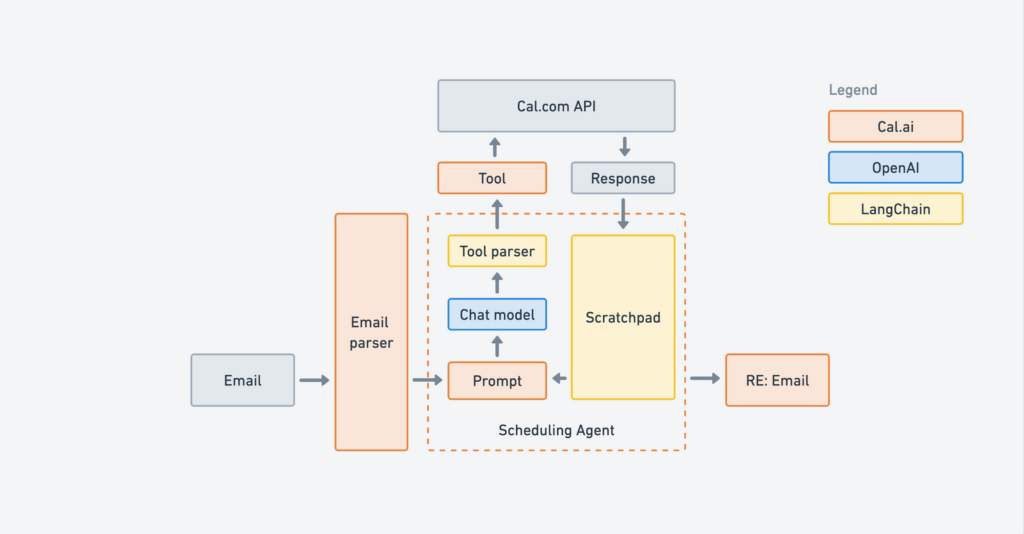Have you ever experienced the incredible capabilities of Large Language Models (LLMs)?
These models can produce a wide range of text, from Shakespearean sonnets to Python code. However, at times they may lack the latest knowledge and fine-tuning can be a lengthy process.
This is where LangChain comes in as a superhero-like tool, streamlining your AI workflows and making them more efficient and enjoyable.
It’s the ultimate solution for building AI applications, allowing you to create customer service chatbots that can answer complex questions while cracking jokes, or email assistants that can write witty and sarcastic replies, or It’s a powerful tool that can take your AI app development to the next level.
Let’s understand what is LangChain and how to use LangChain to build LLM apps.
What is LangChain?
LangChain is often associated with blockchain due to its name, but it’s important to note that it has nothing to do with cryptocurrency.
Instead, LangChain is focused on improving AI applications. It is an open-source framework created to simplify the process of working with LLMs.
To put it simply, it’s like a huge box of specialized Lego bricks that can be used to build smarter and better AI applications. Let’s learn two important concepts about LangChain:
- Chains: Get answers from your AI with these easy steps: fetch data, ask a question, receive an answer, and present it to the user..
- Links: The Lego pieces have different functions: some load data, others communicate with the LLM, and others format the final output. All of them can be snapped together to create amazing AI creations.

But First…What Are These LLMs Anyway?
LLMs are digital assistants that have the ability to learn from vast amounts of text and code, enabling them to understand language intricacies. They can generate text, translate languages, and create various types of content.
One of the most fascinating aspects of LLMs is their similarity to the human brain’s structure. Unlike older AI models, LLMs can comprehend the context of a request, not just individual words. This is because they are built on a unique architecture known as the ‘transformer architecture.’
Transformers
If LLMs were detectives, transformers would be their magnifying glasses and secret decoder rings all in one. This system does not just scan words one by one. Rather, it analyzes how they all relate to one another to figure out the real meaning of a sentence.
For instance, if you were to type, “The fluffy dog chased the ball”, a basic AI might get stuck on the word “fluffy”. However, a transformer-powered LLM is able to comprehend how all the words work together, resulting in much more intelligent output.
LangChain Components
Are you ready to build your own LLM applications with LangChain? With LangChain, you have access to a whole AI gym right inside your code, which includes various toolkits to help you create the perfect LLM.
Model I/O handles all the input and output for your LLM, ensuring that your prompts are correctly formatted and that the answers you receive are ready to use. Retrieval serves as your AI’s research squad, providing your app with access to documents, websites, and databases. Imagine your LLM having access to your company’s entire knowledge base!
Composition provides you with fancy tools that enable your LLM to interact with the outside world. With Bing Search, translation, and database access, all built right in, you can create an AI that is capable of handling any task. Memory helps your LLM remember things, making it perfect for chatbots that need to keep track of a conversation.
LangChain is constantly evolving, so keep an eye out for even more powerful tools that can help you create the perfect LLM.

Step by step instructions to create LLM application using LangChain
Here’s a quick-start guide to help you get started with unleashing your AI genius and building awesome things powered by LLMs:
1. Python Power: Make sure you have Python (version 3.7 or newer) installed. If you don’t have it, you can download it from https://www.python.org/.
2. LangChain Magic: Open your terminal or command prompt and run ‘pip install langchain’ to install LangChain.
3. Your AI Passport: Visit https://openai.com/ and get an OpenAI API key. This API key is your app’s ticket to using the powerful LLMs.
4. API Key Stash: Set an environment variable called ‘OPENAI_API_KEY’. You can search Google to find instructions on how to do this on your specific operating system.
Now that you have everything set up, let the AI adventures begin! The possibilities are endless, so feel free to explore and create amazing things. If you need help with a specific use case, just let me know!

Leave a Reply